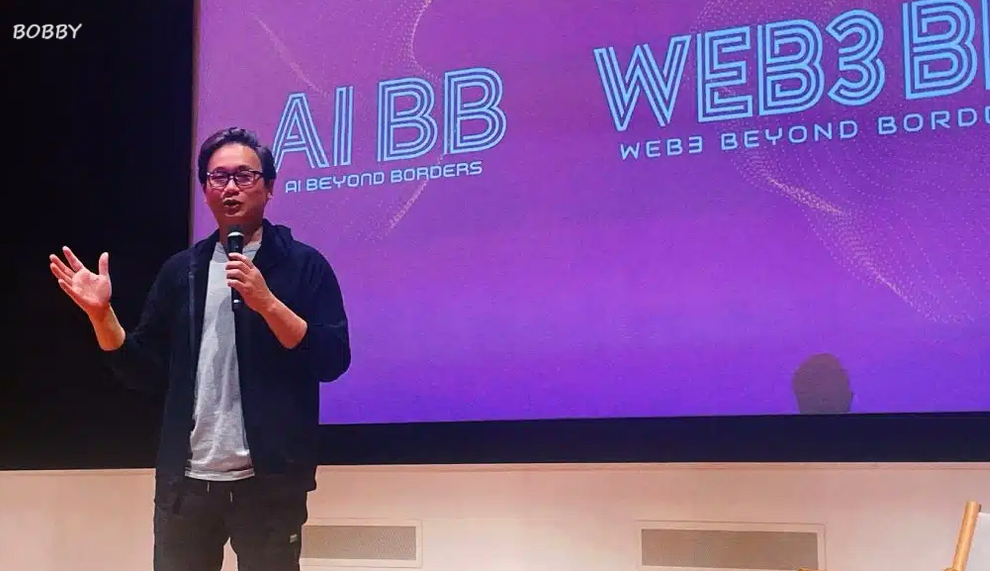At the recent Web3BB Tokyo event, I discussed how the financial industry is undergoing a profound transformation thanks to the convergence of artificial intelligence (AI) and Web3 technologies. Having led multiple AI-driven initiatives in finance, I strongly believe that combining these two technologies is key to creating a more secure, efficient, and personalized financial landscape.
The Symbiotic Relationship Between Web3 and AI
Web3 and AI are not just complementary—they are mutually reinforcing. The decentralized architecture of Web3 provides a secure, transparent, and user-centered platform for AI applications. By leveraging AI within this infrastructure, financial institutions can achieve higher levels of data integrity, security, and insight generation, creating a revolutionary approach to finance.
With AI and Web3, users can explore entirely new ways to trade, invest, and manage their financial portfolios. AI algorithms excel at analyzing complex datasets, predicting market trends, optimizing investment strategies, and identifying risks with precision. Combined with the transparency and decentralization offered by Web3, these technologies can fundamentally transform how individuals and institutions manage money.
Central to this integration is data management. AI relies heavily on vast datasets to learn, predict, and generate insights. Web3 ensures that these datasets are not only secure but also decentralized and accessible, providing a foundation for AI to operate efficiently while respecting user privacy.
Ushering in a New Era of Financial Innovation
As the Chairman of Neurai, a Singapore-based AI startup, I have witnessed firsthand how AI and Web3 can revolutionize finance. Our flagship product, COPX.AI, demonstrates how AI-powered platforms can enhance trading, risk management, and financial decision-making. The goal is clear: a financial ecosystem that is secure, efficient, and tailored to the individual.
AI-driven platforms can analyze market data in real-time, detect emerging patterns, and provide actionable insights. For investors, this translates to better-informed decisions and higher potential returns. Similarly, AI-enabled risk management tools can detect vulnerabilities and alert users before financial threats escalate, safeguarding assets and reducing losses.
By combining these capabilities with Web3’s decentralized approach, we can democratize access to finance. Anyone, anywhere, can participate in financial markets securely, regardless of geographic location or financial background.
The Road Ahead: Innovation and Collaboration
The potential for AI and Web3 in finance is enormous, but innovation requires commitment. At the Web3BB Tokyo event, I had the privilege of meeting over twenty founders of Web3 and AI companies. It was evident that these innovators are dedicated to harnessing technology to create more transparent, accountable, and accessible financial systems.
The path forward requires sustained investment in research and development, as well as experimentation with new platforms and applications. Financial institutions must prioritize innovation to stay competitive while ensuring that these technologies are deployed safely and effectively.
Overcoming Challenges in AI and Web3 Adoption
Despite the immense potential, there are significant challenges ahead. One of the biggest obstacles is regulatory uncertainty. Governments are still determining how to regulate AI and Web3 applications in finance. Questions remain: Will regulators adopt a hands-off approach, or will new legislation impose stricter rules on these technologies? Financial institutions must navigate this evolving landscape carefully.
Education and awareness are also critical challenges. Many professionals in finance still lack a deep understanding of AI and Web3, making training and knowledge-sharing essential for successful adoption. Moreover, scaling these technologies to meet the needs of global financial markets remains a technical and logistical challenge.
A Vision for the Future of Finance
Looking ahead, I am optimistic about the role of AI and Web3 in shaping financial services that are safer, more effective, and highly personalized. This is not just a vision for technologists—it involves the entire financial ecosystem collaborating to build a more open, democratic, and decentralized financial society.
Decentralized finance, or DeFi, is already gaining traction. Platforms like MakerDAO and Compound allow users to lend and borrow cryptocurrencies without intermediaries, demonstrating how finance can be decentralized. But DeFi is still in its infancy. The integration of AI and Web3 can enable more sophisticated trading, investing, and financial planning platforms, providing better user experiences while maintaining high levels of security and transparency.
Democratizing Finance for Everyone
One of the most exciting aspects of AI and Web3 is their ability to make financial services accessible to everyone. Regardless of social or financial status, anyone can participate in investments, access loans, or manage personal finances through decentralized platforms. AI can guide novice users by providing insights and recommendations, making complex financial decisions more approachable.
Additionally, these platforms can foster financial literacy, enabling users worldwide to understand markets, investments, and risk management. By removing traditional barriers, AI and Web3 create inclusive financial ecosystems that empower individuals and small businesses alike.
Enhanced Security and Resilience
Security is another major advantage of combining AI with Web3. AI-powered security systems can detect and prevent cyberattacks, while decentralized Web3 architectures protect sensitive user data. Together, these technologies create a resilient and secure financial environment, reducing the risk of hacking, fraud, and systemic failures.
The Final Word
In conclusion, AI and Web3 are poised to transform finance by creating platforms that are efficient, secure, personalized, and accessible. These technologies have the potential to democratize financial services, enhance transparency, and enable smarter investment decisions.
I am thrilled to be part of this journey toward a more decentralized and innovative financial future. The road ahead will require collaboration, education, and innovation, but the rewards—a more secure, efficient, and inclusive financial system—are well worth the effort.
By embracing AI and Web3, the financial industry can redefine the way people trade, invest, and plan for their financial futures, ultimately creating a world where financial services are accessible, equitable, and resilient.




